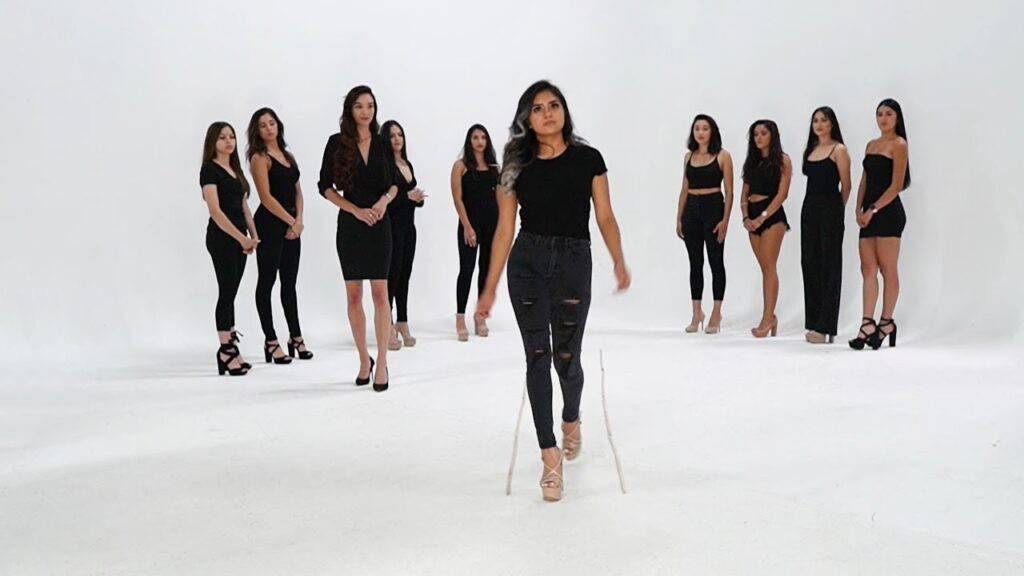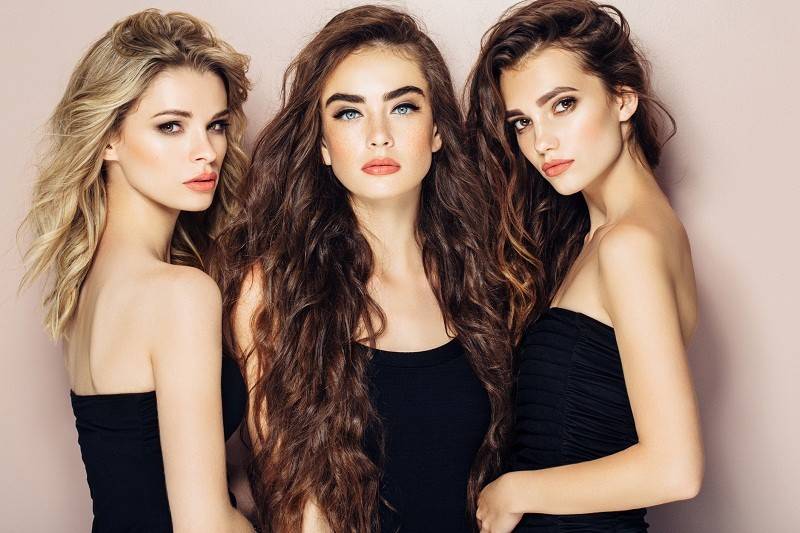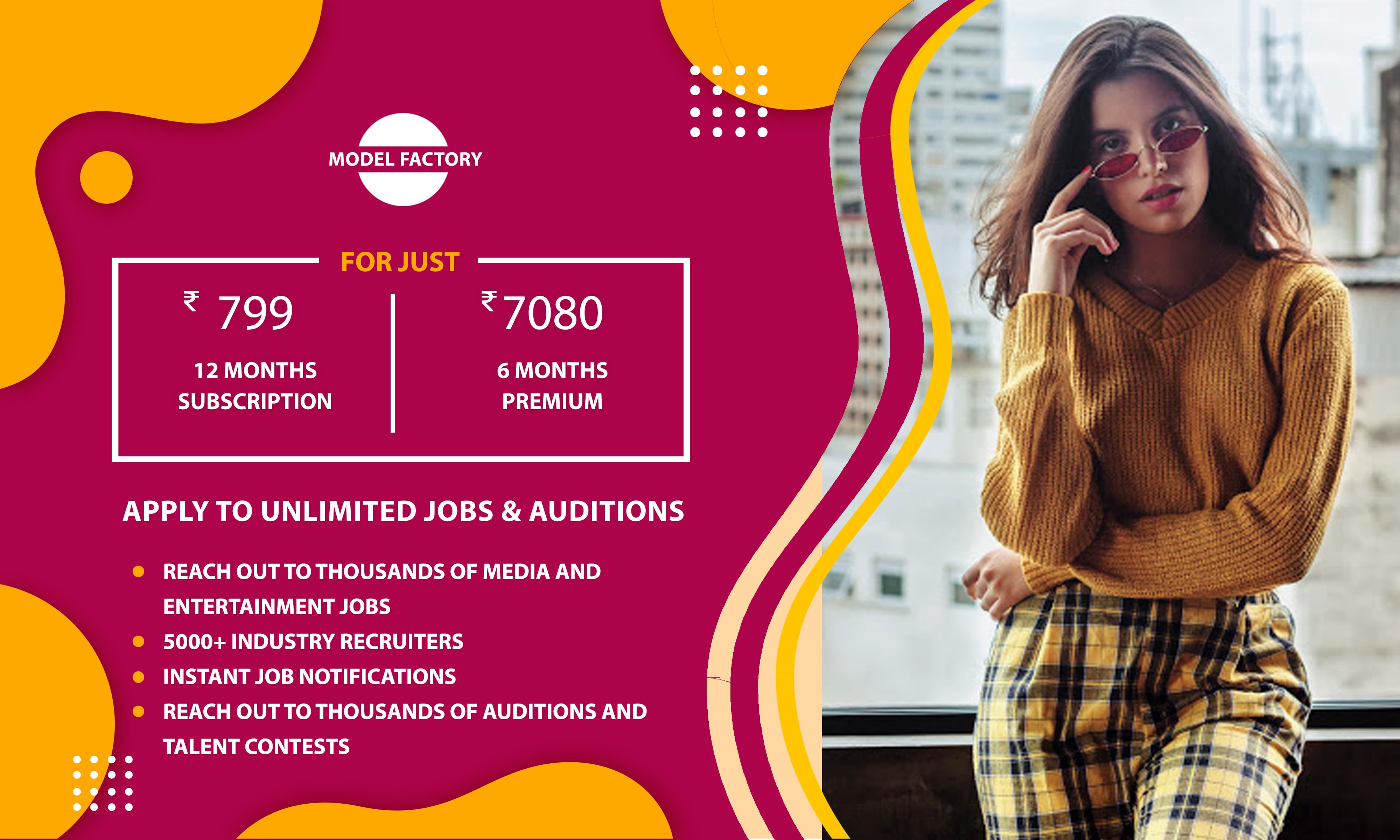What is The Best Age to Start Modeling in India? | Modelfactory
- 15 Jan 2023
- Models
Getting started in the modeling world can seem like a daunting task. You probably have all kinds of questions, like "Do I have what it takes?" "How do I get an agent?" "What are the pros and cons of becoming a model?" If you are looking for help getting into modeling, this article will help answer some of your questions about how to break into the industry and guide you toward becoming a successful model.
Do I Have What It Takes?
Do you have sight? Being a model doesn't just mean being "good-looking" or "pretty". There are many beautiful people in the world. If you're serious about getting into modeling, "being seen" is key. There must be something unique about the way you look or the way you build. It could be a beauty mark (a la Cindy Crawford) the way your dimples show when you smile, something about the shape of your chin or your nose that adds dimension to your face, or any other unique quality. Embrace it This will be what sets you apart from other models in the industry.
As far as general characteristics that are important for anyone looking to get into modeling, height is probably the most important physical characteristic for most models, with 5'7" usually being considered the minimum. Of course, there are exceptions to this rule (take Kate Moss, for example), but it's a good place to start when determining if you're meant for the modeling industry. Runway models must be at least 5'8" as a female and 6'0" as a male. For editorial modeling, having the right looks is more important than just height or a thin frame. For convention/promotional models, it's more about an engaging personality and the ability to act as a product spokesperson. Different types of modeling have certain requirements, but before getting into modeling you should understand what kind of modeling job you are going to do. will you be on the runway Do you want to be in magazines or be a part of private events?
In recent years, for example, there has been a move towards more plus-size models in the business, along with the growth of other niche areas such as tattooed models. Your looks can help determine which area of modeling you'll best fit into, as there are many subdivisions under the larger modeling umbrella. Remember, getting into modeling isn't just about being tall and skinny with perfect posture. This means identifying and playing to your own strengths and finding the type of work that's right for you.
What are The Different Types of Modeling?
Many models who are brand new to the industry are surprised at how many different styles are available for them to find work in.
Here is a list of the most popular styles:
Runway (Cat-Walk) Modeling -
High-end models typically shoot for editorials, high-end designers, runway, and fashion campaigns. Fashion models have specific standards for age, height, and measurements. The typical age is 16-21. Models can be younger than this, but many agencies will require models to be at least 16 years old. Similarly, models may be older, but agencies and clients prefer their models to look younger and more youthful. Height should generally be between 5'9"-6", Bust between 32"-36", Waist between 22"-26", and Hip between 33"-35". Of course, most women do not meet these standards and this is why fashion models are generally the highest paid and most worked. If you don't meet these requirements, don't worry, most women don't and it doesn't mean agencies don't make exceptions and you can't walk the runway.
Print (Catalog, Editorial) Modeling -
Another lucrative modeling genre that is a little less restrictive than fashion modeling. Height is typically between 5'8" and 5'11" and typical measurements are: bust 32"-35", hips 33"-35", and waist 22"-26". Catalog and fashion are two of the most distinctive styles of modeling. That's why they get maximum profit.
Lingerie/Swimsuit Modeling - Models also tend to have specific measurement requirements. Typical lingerie measurements are Height 5'7″-6′, Bust 32″-35″ C Cup, Waist 22″-26″, and Hips 33″-35″. A bikini model would be similar to a lingerie model but with a slightly larger bust size.
Other types of modeling include television commercials, live product/brand, live showroom, web, and niche modeling (tattoo, piercing, petite, plus-size, mature, body part, fitness/bodybuilding, without clothes, and others). Measurements will always vary depending on the type of modeling and industry you are working in.
Are there areas of modeling listed above that you are not familiar with? You are probably not alone. So which genre is right for you? Well, models with the girl-next-door look are often very well suited for commercial and catalog modeling to sell beauty products, clothing, and accessories in magazines and ads. If fitness is your passion, a major growing field of modeling is fitness modeling for girls who are in good shape and can help promote athletic wear and fitness companies.
What type of model you best embody will allow you to be more successful because you can focus on that area. There are a lot of opportunities in the entertainment industry. This will help you avoid frustration as you try to get started in modeling, and will allow agencies and casting directors to see that you're fitting into their roster more clearly or that they're looking for a certain job. meeting needs. ,
If you are just getting into modeling, you may want to know if there are training classes specifically for modeling. If you think you've found modeling classes, it's important to be cautious because it could be a scam. It is generally safer and more beneficial to take other types of classes, such as a dance class to improve your running quality and body awareness, an acting class to help you feel more comfortable with speaking, and professional jobs. , or to help take a fitness class. your body in shape. Spending time with a professional photographer is also extremely beneficial because they can give you real-world advice on what other photographers and directors are looking for from their subjects.
How Do I Get Started?
So you've decided you want to give the model life a chance. The first step to a successful career is finding a qualified, experienced agent. As with the "modeling classes" mentioned above, some modeling agencies are actually scams. It is extremely important to make sure that the agencies you are considering working with are legitimate. do your research! Checking the websites of the agencies you're interested in will help you understand what type of models they're looking for, what jobs their clients have booked, and their overall professionalism. Model management is very important, it is best to do your research before signing up with companies.
There are often references or recommendations online that can help point you in the right direction. One of the biggest red flags is if an agency asks for money upfront from a new client, be it for a photo/portfolio package or for any other reason. Reputable agencies will never cost anything. They make money if you book a job, and only if you book a job. If you see signs that they are trying to get their money some other way, don't run, run.
Building a Portfolio
Once you've compiled a list of reputable agencies that represent the type of model you want to be, it's time to send your "book" to them. This will include your "stats" (your basic measurements, height, and weight) and a portfolio of pictures. Most of the photos you need are simple digital ones. Try taking the shot using little or no makeup, a very basic outfit with minimal accessories, and natural lighting. It's important for the agency to see both your face and body, so be sure to include a wide-angle shot that shows your body and a close-up shot of your face. Wear fitted clothing to allow the agency to see the basic shape of your body. If you're hoping to land a swimsuit or lingerie show, you should include those photos as well. Play with angles and poses to find your most attractive look to send to agencies. Plan on a similar approach while attending open modeling calls; Your clothes should fit well and hair and makeup should be minimal.
If you have prior modeling experience and professional photographs from previous jobs, that's great to include as well. However, if you're just starting out, it may be worth the investment to hire a professional photographer for the purpose of getting high-quality photos to submit to agencies. From there, if you can invest in quality, up-to-date photos each year, it will be a huge plus for you.
Good or Bad
There is much more to modeling than just looking beautiful in front of the camera. This is a business first and foremost, so it's important that aspiring models treat it as such and approach it as any other job, with professionalism, grace, and flexibility. There are many great advantages to being a model. You get a chance to help bring others' visions to life. This can be an amazing opportunity to really do what you love, meet really great people – be they photographers, designers, or fellow models – and explore cities around the world.
However, the industry is certainly not all about the glitz and glamor as it might appear from an outsider's perspective. Unless you're a supermodel doing major campaigns, you generally won't make a lot of money (at least not consistently.) Modeling can be physically, mentally, and emotionally difficult. There can be a lot of competition between models as there are often multiple models vying for the same, smaller pool of jobs. This inevitably means a lot of rejection, which can be emotionally draining.






